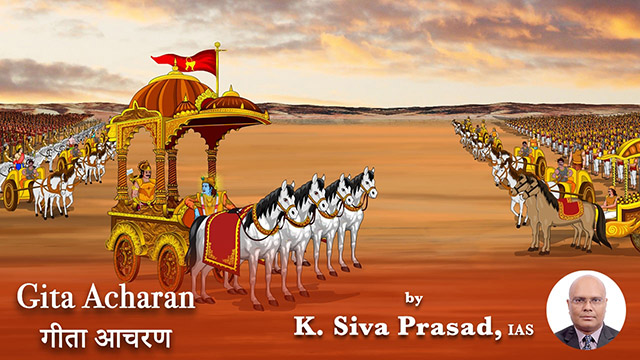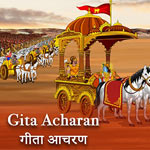
Krishna says, "Whatever being is born, moving or unmoving, know that to be the union of 𝙠𝙨𝙚𝙩𝙧𝙖(field) and 𝙆𝙨𝙚𝙩𝙧𝙖𝙟𝙣𝙖 (Knower of field) (13.27). He truly sees who perceives 𝙋𝙖𝙧𝙖𝙢𝙚𝙨𝙬𝙖𝙧 (supreme lord) present equally in all beings as the imperishable among the perishable" (13.28). A similar description was given by Krishna where he described '𝙨𝙖𝙩 ' as eternal and '𝙖𝙨𝙖𝙩 ' as the one which wasn't there in the past and which wouldn't be there in the future (2.16); and advised us to differentiate between them.
Everything we see around us is perishable. Krishna says there is imperishable behind this perishable. Instead of getting deeper into perishability to discover the imperishable, we tend to build our lives around the perishable. It is like building castles in the air. Our efforts to bring permanence or certainty in the perishable is bound to end in misery. Krishna described such a situation as the destruction of self by self and gave a solution to realise the omnipresence of the Lord to reach the supreme Goal (13.29). It's about developing the habit of looking at the perishable (change) as a witness without getting attached or detached; to live in harmony with the change without resistance or fight.
Krishna further says, "He who sees all actions are performed by 𝙥𝙧𝙖𝙠𝙧𝙞𝙩𝙞 (nature) alone and also the Self as non-executor, he sees" (13.30). In the perishable world, there is hardly any place for a 𝙠𝙖𝙧𝙩𝙝𝙖 (doer) as everything is like a bubble that gets generated and subsequently perishes.
At regular intervals, it is explained in the Gita that we are not 𝙠𝙖𝙧𝙩𝙝𝙖 (doer) of action. The combination of the three 𝙜𝙪𝙣𝙖𝙨 borne out of 𝙥𝙧𝙖𝙠𝙧𝙞𝙩𝙞 and their interaction is responsible for the action we see around us. The deeper this gets inculcated in us through our life experiences, the more peaceful we become.

